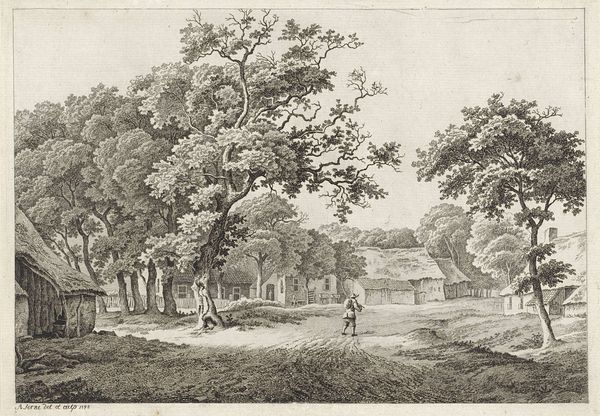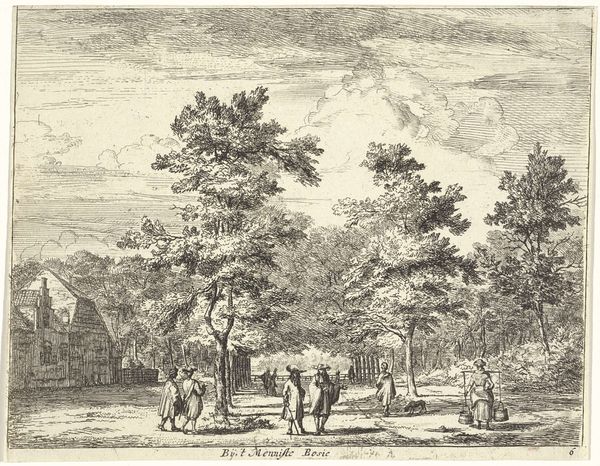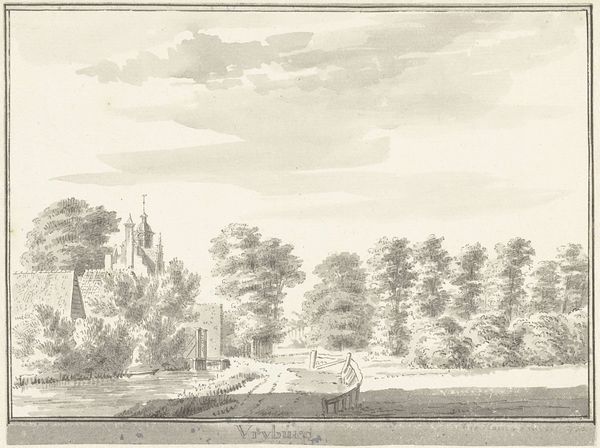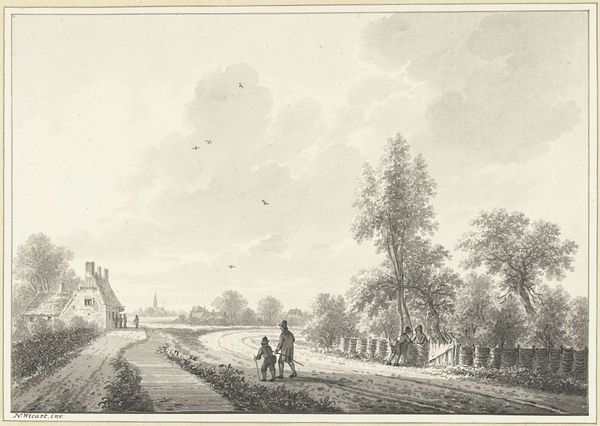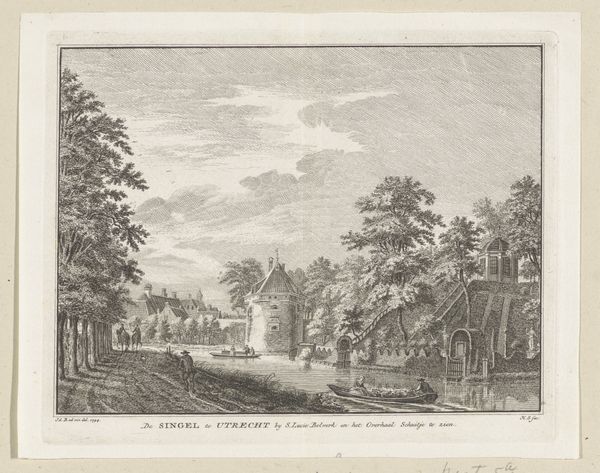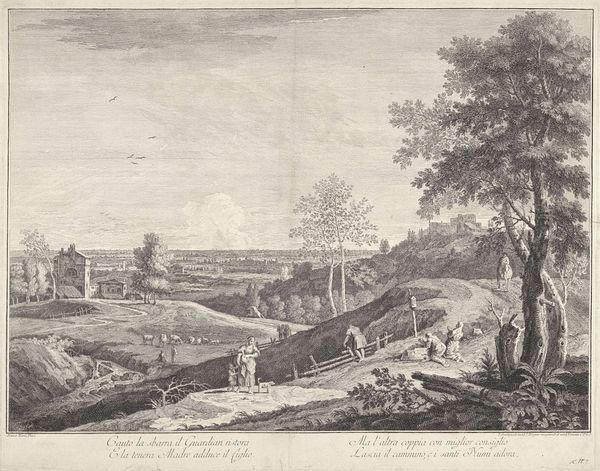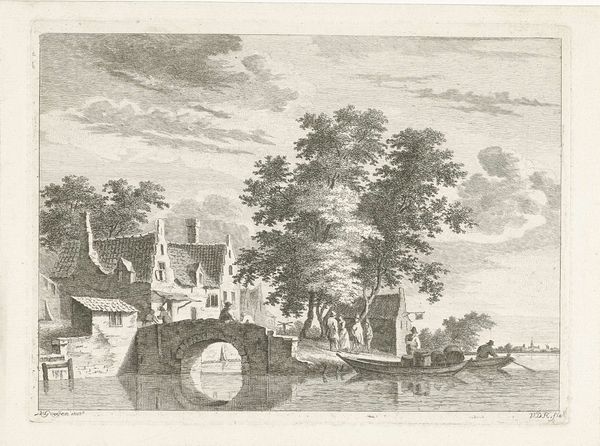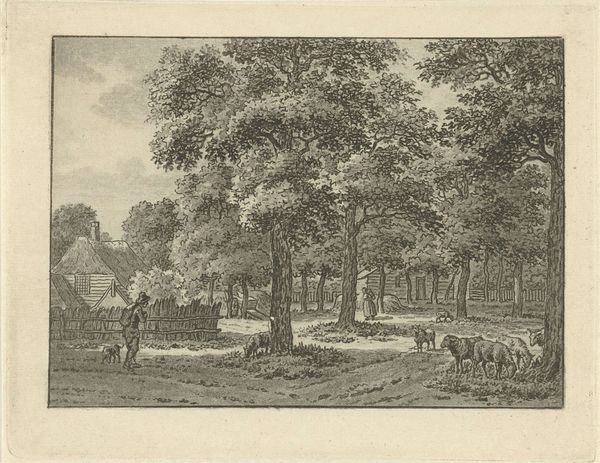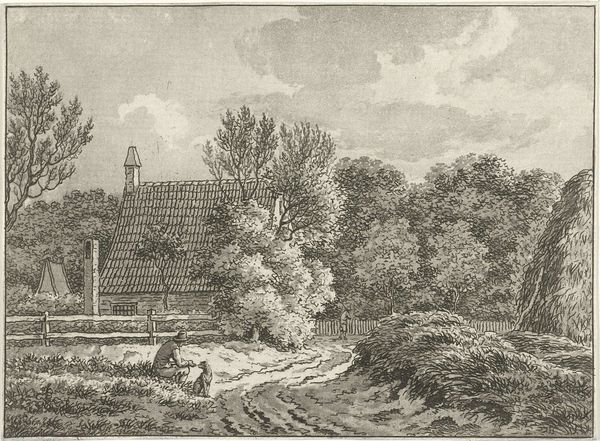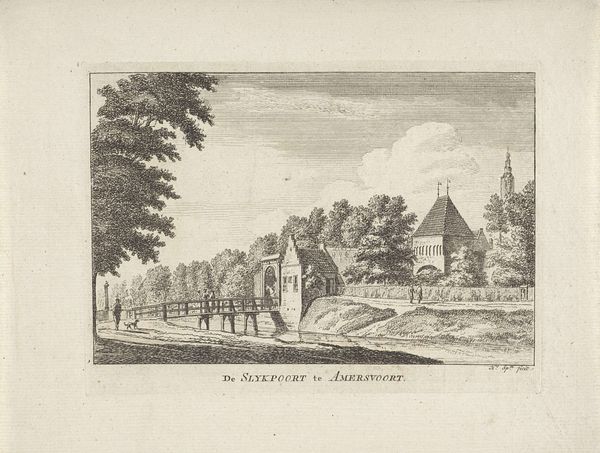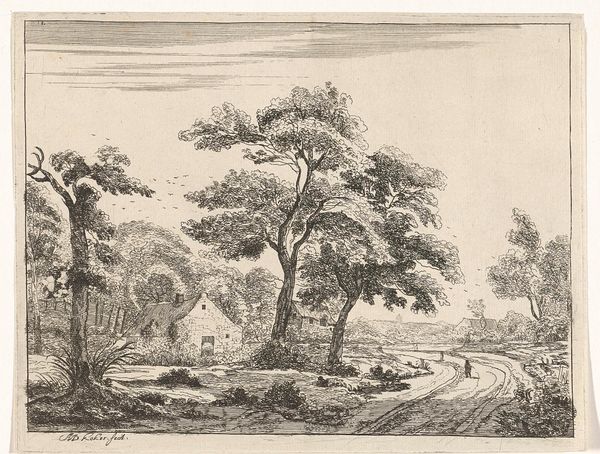
print, engraving
#
baroque
# print
#
landscape
#
cityscape
#
engraving
Dimensions: height 155 mm, width 218 mm
Copyright: Rijks Museum: Open Domain
Curator: Looking at this engraving, titled "Het voormalig St.-Agathaklooster te Amersfoort", we're observing a work created sometime between 1700 and 1772 by Gerard van Rossum. Editor: It’s like stepping back in time. The way the light filters through the trees, there's this tranquil, almost hushed quality to the whole scene. A real pastoral vibe. Curator: Absolutely. Van Rossum captures a unique perspective here, juxtaposing the religious architecture of the former St. Agatha's Monastery with a slice of everyday life unfolding in the foreground. Note how the church steeple establishes a point of familiarity within this cityscape. Churches always represented the permanence and history that people relied upon. Editor: And the figures going about their business really anchor it. The little dog, the people chatting near the cart…they all feel so grounded and real. What I love about baroque art like this is how it makes something grand – a monastery! – feel integrated with daily life. Like, the spiritual and the mundane aren’t separate, but intertwined. Curator: Precisely. Even though it is not the style's most recognized symbol, consider the composition. Our sightlines are guided towards and through the surrounding greenery into the architectural elements within the urban landscape. It feels both very familiar and structured at the same time, which contributes to that theme. Editor: It’s like, yeah, there’s a former monastery and all the spiritual history that implies, but life goes on, doesn’t it? People still have to travel, trade, and chat and the animals have to walk by their masters, totally oblivious of human preoccupations. Curator: A subtle reminder of the cyclical nature of history. It also reminds one to value simple beauty and continuity. We have so much to learn from observing such an early example of what might today seem banal to some. Editor: Indeed. And for me, it is that very subtlety that gives it its charm, and what makes it truly sing through the centuries.
Comments
No comments
Be the first to comment and join the conversation on the ultimate creative platform.
